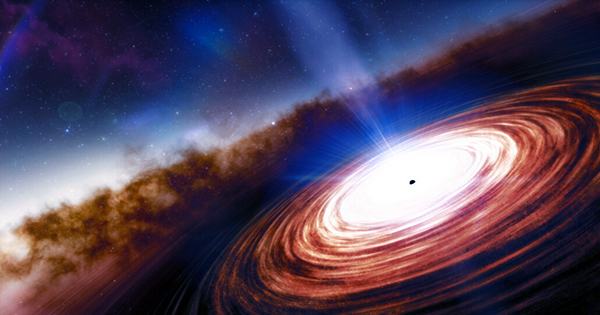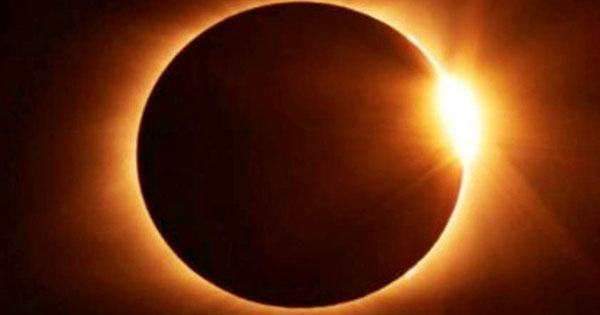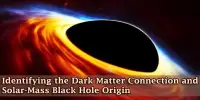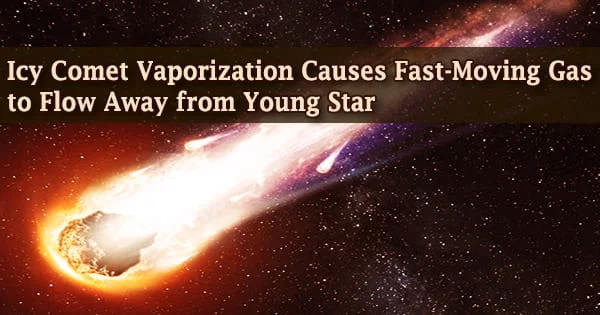Large galaxies like the one we live in have supermassive black holes (SMBHs) hidden within. From their dominant position in the center of the galaxy, they consume any stars, gas, dust, or other object that ventures too close, gaining mass over time. An SMBH, however, can occasionally be pushed to leave its place and travel through space as a rogue SMBH.
A renegade SMBH that is tearing through space and interacting with the circumgalactic medium (CGM) is revealed by researchers from Canada, Australia, and the U.S. in a recent publication. Along the way, the giant is creating shock waves and triggering star formation.
The paper is “A candidate runaway supermassive black hole identified by shocks and star formation in its wake.” The lead author is Pieter van Dokkum, Professor of Astronomy and Physics at Yale University. The paper is avaiable on the arXiv preprint server and hasn’t been peer-reviewed yet.
If you’ve never heard of a runaway SMBH, you’re not alone. Since SMBHs are typically locked into place at the galactic centers, they remain there. Yet, researchers believe that SMBHs can occasionally leave their galaxies. The authors of the paper describe how an SMBH can be expelled from its home galaxy.
It always starts when galaxies merge. As a result, a binary SMBH develops in the merger remnant’s core. The binary SMBH can survive for up to a billion years before merging, which is a very lengthy lifespan. A three-body interaction may accelerate one of the SMBHs and propel it out of the galaxy if a third SMBH reaches the galactic center at that period.
But despite their theoretical underpinnings, finding these rogue SMBHs is difficult. Astronomers identified one of the best candidates in 2021, about 230 million light-years away.
The authors saw unusual movement and speed, which pointed to a recent disruption. However, they were unable to determine whether they had witnessed a gravitational wave recoil event, a double black hole system, or an ongoing galaxy merger.
Deeper data, for instance, from the JWST NIRSPEC IFU, may show the expected broad, highly red or blueshifted emission lines of ionized gas that is bound to the black holes themselves. Those data could also spatially resolve flows, shocks, and star formation near A.
Astronomers recognize a couple of ways that they can identify a runaway SMBH. The simplest method is if the hole can be recognized by its luminosity as an active galactic nucleus that is actively absorbing material.
“For such objects,” the authors write, “the presence of an SMBH is not in doubt, but it can be difficult to determine whether they are ‘naked’ black holes or the nuclei of merging galaxies.”
Another way is by the stellar mass that the rogue hole drags along with it. When an SMBH is ejected, some stars are drawn along by its powerful gravitational force. Yet, the lack of an AGN’s brilliance makes it challenging to distinguish the hole and its star companions at a distance.
A third way that astronomers could recognize a potential rogue SMBH is by the effect it has on the diffuse gas in the circumgalactic medium (CGM) as it passes through it.
“The interaction of a runaway supermassive black hole with the CGM can lead to the formation of a wake of shocked gas and young stars behind it,” the authors write. In their paper, they report the serendipitous discovery of a linear feature in images from the Hubble’s Advanced Camera for Surveys that could be one of these wakes.
An SMBH creates a shock front and a substantial wake as it passes through ionized hydrogen in the CGM. Clouds of startled gas can cool and form stars that resemble knots in the trail in the aftermath. Three of the linear feature’s knots were examined, and the researchers determined their ages and metallicities.
The youngest stars that formed in the wake should be less than 30 million years old, according to theory and simulation. The three knots fall within the age range suggested by models, according to measurements of their attributes made by the researchers. Moreover, their metallicities and dust contents fall within the range.
If the host galaxy ejected an SMBH, the galaxy should show signs of disruption. The tremendous mass of SMBHs prevents their movement across a galaxy without affecting it. The investigation team discovered that the morphology of the galaxy that gave rise to the rogue SMBH was disturbed.
There is, however, another possible explanation for the linear feature. Instead of a renegade SMBH, it might be a black hole jet. Black hole jets can also shock CGM gas and trigger star formation under the correct circumstances. “There are two well-studied nearby examples of jets triggering star formation,” the authors state. One of them is called Minkowski’s Object.
The black hole jet explanation is acknowledged by the authors as a possibility, but they assert that it has too many flaws. Black hole jets don’t have visible emission lines, and there is no indication of nuclear fusion. There’s also a problem with morphology.
“A more serious issue is that the morphology of the feature does not match simulations or observations of jet-induced star formation,” the authors explain.
They settle on a runaway SMBH as the best explanation for the data and observations.
“The line ratios, colors, and the overall morphology are consistent with an ejected SMBH moving through the CGM at high speed while triggering star formation,” they write.
Locating the black holes would be incontrovertible evidence for this conclusion. “The ‘smoking gun’ evidence for this scenario would be the unambiguous identification of the black holes themselves,” the researchers write.
“These are candidates for ‘hyper compact stellar systems,’ SMBHs enveloped in stars and gas that escaped with them,” they explain.
It won’t be surprising if the extended characteristic in these observations has an uncommon source because it is quite unusual. Only more observations which the JWST might offer can reveal whether rogue SMBHs are at action.
“Deeper data, for instance, from the JWST NIRSPEC IFU, may show the expected broad, highly red or blueshifted emission lines of ionized gas that is bound to the black holes themselves. Those data could also spatially resolve flows, shocks, and star formation near A,” the authors say, looking ahead.
And if there is one instance of runaway SMBHs creating these features, there will be others.
“Looking ahead, the morphology of the feature in the HST images is so striking that it should not be too difficult to find more examples if they exist. Future data from the Nancy Grace Roman telescope can be searched with automated algorithms,” they explain.
It is an interesting phenomenon to observe a rogue SMBH wandering across the circumgalactic medium after becoming cut off from its galaxy. Understanding SMBHs, how they relate to galaxy growth, and how they merge to produce gravitational waves is still in its infancy.
The fact that they can be expelled from their host galaxies adds a level of intricacy that could only be created by nature.
















